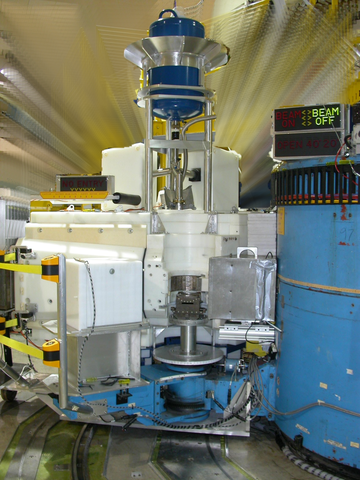FILTER-ANALYZER SPECTROMETER (FANS)

View of the FANS sample area and filter/detector bank
The Filter Analyzer Neutron Spectrometer is the instrument used for neutron vibrational spectroscopy installed at the NCNR. It is design to reveal fine details of the vibrational motion of molecules acting as 'fingerprints' of their surroundings in materials. This instrument offers a choice for monochromators, a combination of polycrystalline Be followed by a block of polycrystalline graphite analyzer cooled to 77 K, and a Bi filter that makes it the most versatile of the thermal-neutron scattering instruments at NIST.
Specifications/Capabilities
Principle of the technique
The operation of FANS is simple: Monochromatic neutrons of variable energy are inelastically scattered from the sample and detected at a fixed final energy Ef after they pass through a low-pass Bragg cutoff filter (polycrystalline beryllium and graphite, giving a cutoff of ~1.8 meV). Inelastic spectra are recorded by scanning the incident energy and detecting all scattered neutrons with energy Ef < Ecutoff. The filter-detector assembly of FANS consists of a single wedge spanning 110 degrees. Monochromator choices are (i) Cu (220) for higher resolution studies, or for measurements with higher incident neutron energies, and (ii) pyrolytic graphite (002) for lower incident energies, with moderate resolution and higher beam intensities. Monochromator changes can be made within a few minutes. Details here.
Characteristics
- Energy transfer range 5 - 250 meV
- Resolution ~1.1 meV at low energies (determined by the filter cutoff); resolution at high energies given by the performance of monochromator
- Detector coverage 9% of 4 π
- Incident beam cross-section 30 mm x 70 mm
- Minimum sample mass 10 mg for a hydrocarbon sample
- Q-range link
- Resolution link

